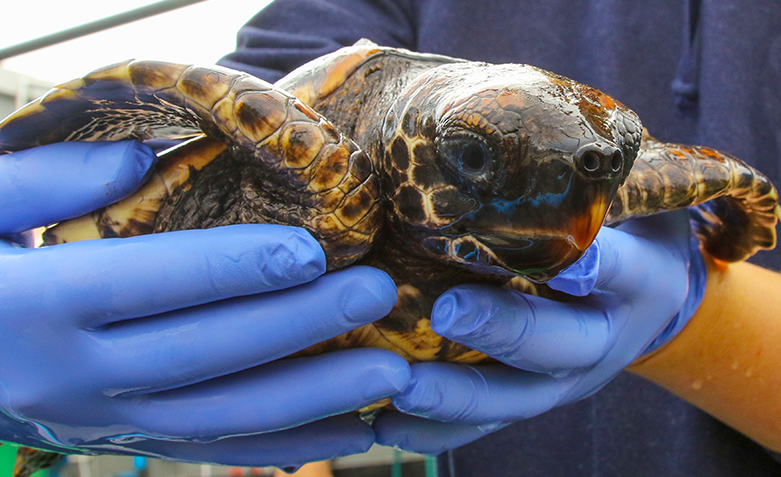
The UK is blessed with six native species of reptile: the Common Lizard, Sand Lizard, Slow Worm, Grass Snake, Adder and Smooth Snake. While not all these species are endangered, all their populations are declining and they’re facing greater threats than ever before. British reptile conservation and welfare has never been more important.
However, reptiles often receive less attention than other species, particularly mammals and birds, and can be perceived as less important. Organisations committed to reptile conservation, rescue and welfare may struggle to secure the same levels of funding as other conservation and welfare charities.
Yet, by adopting creative approaches to fundraising, both online and off, your organisation can boost the donations you receive and secure long-term, sustainable streams of income from fundraising.
Offline Fundraising Ideas for Reptile Conservation and Rescue
Although digital fundraising is playing a bigger role than ever in conservation and animal welfare, in-person events are still important.
Offline fundraising gives your organisation valuable opportunities to meet potential donors face-to-face to engage them with your work. It also lets you offer multiple ways to support your organisation, including by donating cash, signing up for regular online donations, and buying merchandise. Offline events are excellent opportunities to take plenty of photos and videos that can be used for future online promotions too.
Reptile Education Workshops
Although reptiles tend to be less popular than mammals and birds, there are still plenty of people who are fascinated by them and who would appreciate the opportunity to learn more about the UK’s reptiles.
Education workshops can provide a platform to inform the public about the fascinating lives of reptiles, dispel common myths and misconceptions, and promote a better understanding and appreciation of these species. Participants can learn about reptile biology, behaviour, and their ecological roles, as well as conservation issues affecting reptile populations. Workshops can be targeted at different groups, including adults, science students, or children.
To host a reptile education workshop, you’ll need to:
- Identify reputable experts who can speak at your workshop.
- Find a suitable venue that will accommodate your needs, including any interactive or hands-on sessions you might want to offer.
- Conduct a health and safety audit and apply for the appropriate permits for hosting live animals, if needed.
- Promote the workshop, both online and off. Use a mix of social media, local community pages, event listings and partnerships with local organisations, like schools or nature groups.
Sponsored Reptile Walks
Sponsored walks can combine educational talks given by an expert with an opportunity to see reptiles in their natural habitats. Participants can learn how to identify species, find out more about their ecological interactions and importance, and see first-hand some of the threats they face.
Similar considerations will need to be taken for organising and hosting reptile walks. Pay special attention to finding suitable locations for walks and ensuring you have the necessary permissions or permits.
Online Fundraising Strategies for Reptile Rescue

Online and digital fundraising approaches are central to successful conservation fundraising. Online platforms can dramatically increase your organisation’s reach. They can also be engaging and extremely cost efficient when utilised effectively. For reptile conservation and rescue fundraising, consider:
Social Media for Fundraising
Social media has the potential to hugely increase the reach and awareness of your organisation if used strategically and intelligently. However, if used without thought and planning, social media can land flat and have little impact. To get the most out of your organisation’s use of social media, aim to:
- Focus on a small number of platforms that your target audiences use and that your organisation can devote sufficient resources to.
- Create compelling content that tells impactful stories about your conservation or welfare work.
- Use eye-catching visuals, including photos, videos, and infographics.
- Take advantage of available fundraising features, like Facebook donation buttons and Instagram donation stickers.
- Interact with your followers and encourage discussions, ask and answer questions and invite supporters to engage with you. This will help you foster a sense of community and build a social presence beyond mere passive posting.
- Interact with other organisations and influencers, reply to them and share their posts. If you do this, they’ll be more likely to engage with you and share your posts in return, boosting your own reach.
- Use relevant hashtags and participate in trending conversations to increase the visibility of your social media posts.
- Monitor and analyse your social media analytics to understand what works best to further refine the effectiveness of your social media use.
Crowdfunding and Online Donation Platforms
Accepting donations online opens up more ways for your supporters to give to you, and can provide your organisation with new streams of revenue. As well as using social media to accept donations, consider crowdfunding platforms too.
Crowdfunding platforms offer an efficient way to collect small amounts of money from many people, turning modest donations into substantial sources of income. A range of crowdfunding sites are available, each with different benefits and advantages. Some are more suited to raising funding for one-off projects, like Kickstarter and Indiegogo, while others are intended for generating continuous, membership-style donations, like Patreon.
To use crowdfunding effectively:
- Select a crowdfunding site that features the options that support the type of crowdfunding you want to engage in.
- Create your organisation’s page on the crowdfunding site. Focus on telling a story that explains the importance of your work, the challenges you’re facing, and how donations can help you overcome them.
- Add engaging images and videos to highlight your work and the species you’re conserving or rehabilitating.
- Offer membership rewards to encourage donations.
- Promote your crowdfunding account as a way to support your organisation via your social media and through other communication channels, like email newsletters.
Using Easyfundraising to Raise Donations for your Organisation
Easyfundraising is similar to crowdfunding in that we’re a donation platform that enables you to collect small sums from a large number of supporters. But there’s one key difference. With easyfundraising, your supporters earn donations for you with their day-to-day online shopping, without it costing them a penny extra.
First they need to sign up to easyfundraising. Then when they shop with one of our partner retailers, the retailer will donate a portion of what they spend to a chosen charity. Your supporters can choose your organisation to be the charity they donate to.
To use easyfundraising to receive donations for your organisation, first register your cause with us as a charitable cause. We’ll then provide you with a suite of tools for you to use to promote easyfundraising with your supporters so they can donate to you. These include pre-written emails, social media templates, and WhatsApp messages.
Fundraising Success Offline and On for Reptile Conservation and Welfare

Although fundraising for reptile welfare and conservation can be challenging, by adopting innovative approaches to fundraising, your organisation can secure the ongoing revenue it needs to support your work. Both offline and online fundraising offer your organisation considerable opportunities, including raising donations via easyfundraising. Find out more about how we can help your cause.
